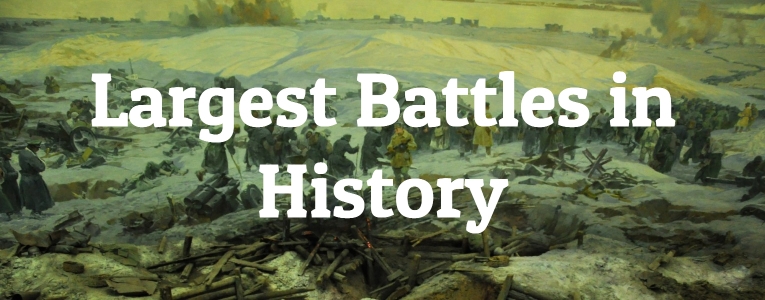For purposes of the discussion, we won’t discuss battles that lasted over a period of more than a year (technically a “siege”) or ambushes (Pearl Harbor) or the only use of nuclear weapons in war ever (in Japan during World War II). Battles usually involve opposing groups lining up against each other, employing some strategy to achieve victory.
-
Battle of Salsu
Major conflict: Goguryeo-Sui War
When: 612 AD
Estimated casualties: 300,000
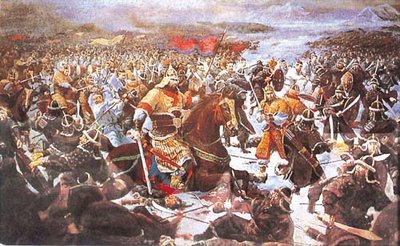
Source: Public domain, Wikimedia Commons
Goguryeo was a kingdom encompassing the north and central parts of the Korean peninsula. Its territory reached into Manchuria, encroaching on territory coveted by the Sui Dynasty.
The Sui military outnumbered the Goguryeo greatly. General Mondeok executed a plan. That plan was to fight off Sui forces and retreat to the Salsu River where the Goguryeo had laid a trap. They had dammed the river, allowing the Sui to enter the shallow water. When they did, the Goguryeo broke the dam and drowned many Sui troops. They easily defeated the rest.
Did You Know?
The Goguryeo kingdom fell apart and its territory was divided. A new kingdom, Goryeo, united the peninsula and its name is the origin of modern Korea.
-
Battle of Wuhan
Major conflict: Second Sino-Japanese War
When: June to October 1938
Estimated casualties: 540,000
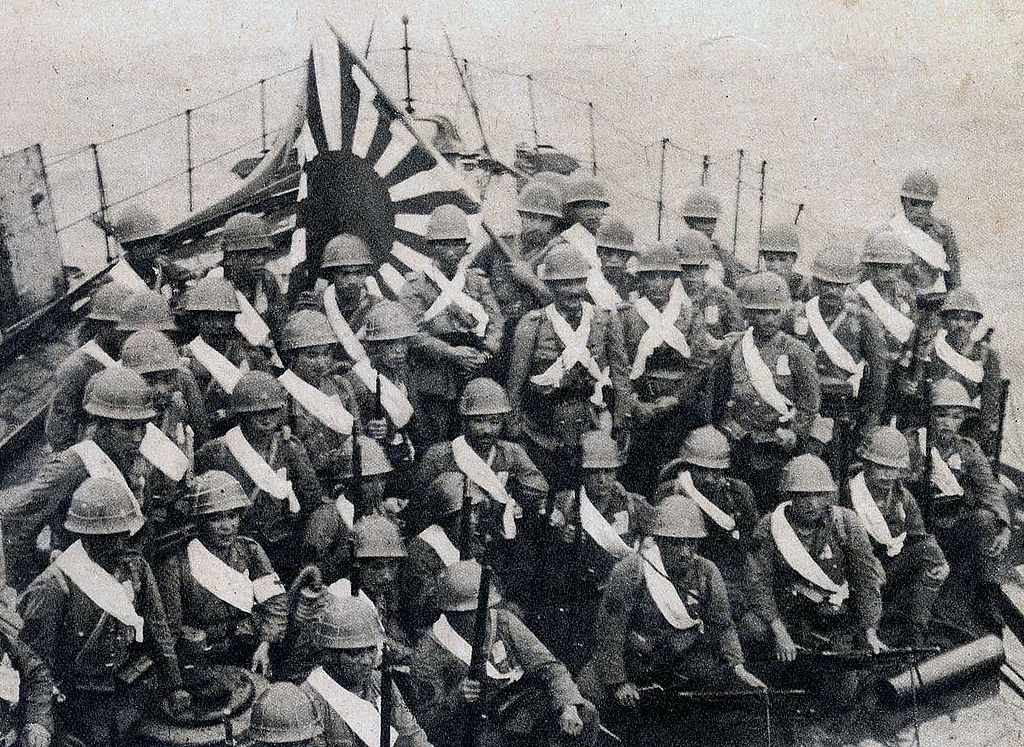
Source: Asahi Shimbun Public Domain
Japan occupied Chinese territory beginning in 1931. There were several attempts by the Chinese to liberate themselves. In 1937, the Japanese Imperial Army invaded deeper into China to repress Chinese nationalism. Wuhan, the second largest city in China at that time, was important to the rebellion.
Japan won a decisive victory, killing or capturing 70% of the Chinese ships and aircraft through air superiority. However, their land forces were more or less intact, where as the Japanese army suffered great losses. The Chinese army was then able to contribute to the defeat of the Japanese in World War II.
Did You Know?
The Soviet Union, in conflict with Japan over territory, aided the Chinese military via a “volunteer” force.
-
Battle of Kiev
Major conflict: World War II
When: June to September 1941
Estimated casualties: 740,000
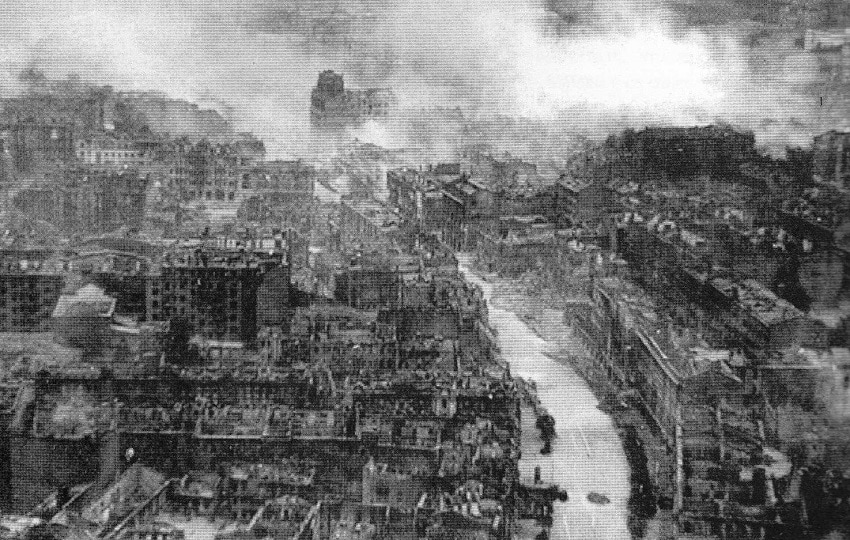
Source: By Anisimov, Aleksandr Public Domain
While the Soviet Army was eventually the force that stifled the Nazi military, the Battle of Kiev was one of the worst defeats of the war.
Soviet troops were stationed on the Southwestern front near Kiev. German forces believed the troops stationed at the front were important, but were focused on marching towards Moscow. Once Hitler learned the Soviet troops at Kiev were in distress, he diverted his troops from Moscow to Kiev.
The German army encircled the Soviet troops, cutting them off from supplies and reinforcements. Bombing raids killed thousands of Kiev residents.
Did You Know?
Hitler and his generals bitterly disagreed over whether to march on Moscow or take Kiev. Some historians believe Hitler’s focus on Kiev was a tactical mistake.
-
Battle of Normandy
Major conflict: World War II
When: June to August 1944
Estimated casualties: 795,000
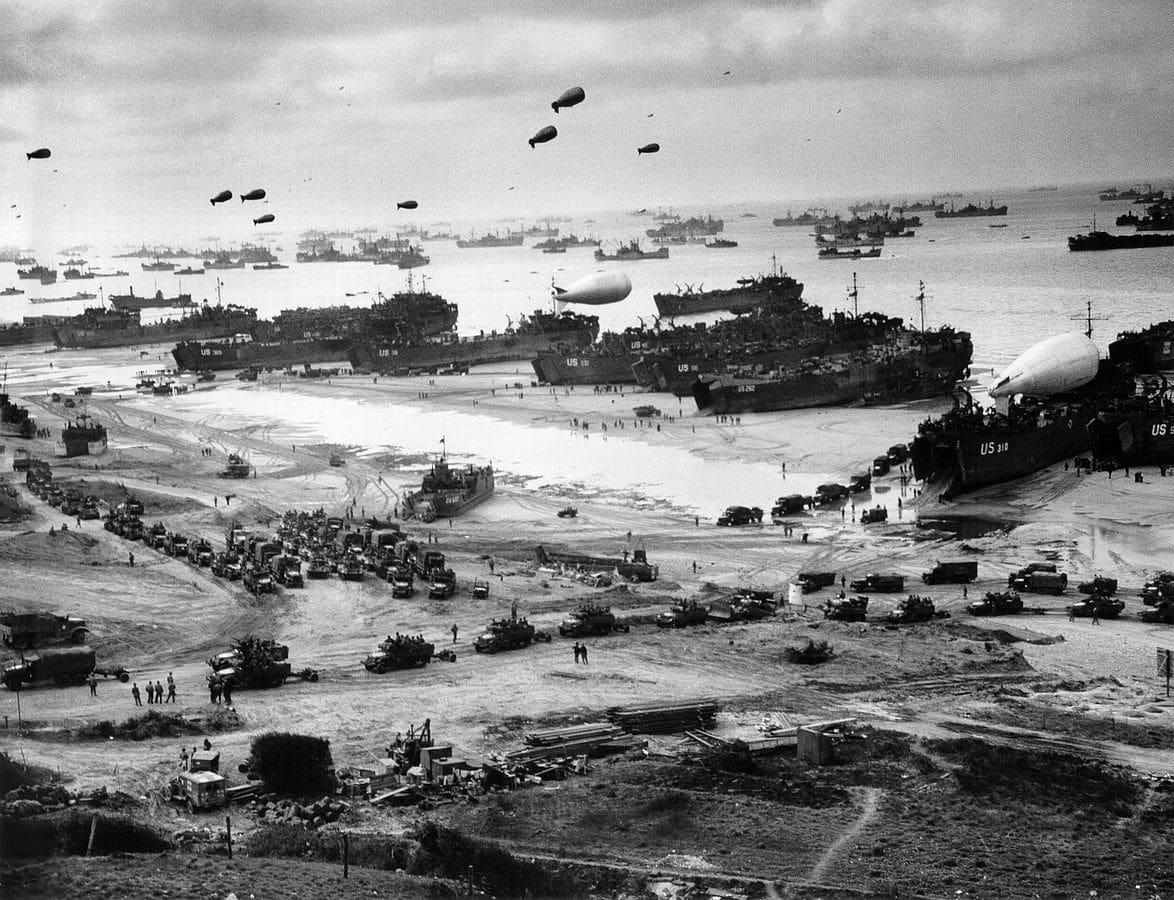
Source: MIckStephenson via Wikimedia Commons
This battle is better known to most people as D-Day, commemorated every year on June 6. France had fallen to Germany in 1940. By 1943, the US had entered the war. The Allies were ready to invade Nazi-occupied territory.
They began the operation by bombing German airfields and production sites. Later, 1,200 amphibious craft landed on the beaches at Normandy, supported by fighter planes and naval artillery. Within two months, most German military were captured or killed.
Historians estimate over 2 million military persons participated in the operation.
Did You Know?
Several Hollywood films have told stories about or related to the Normandy invasion including the award-winning films Saving Private Ryan and Dunkirk.
-
Battle of Changping
Major conflict: Warring States
When: 260 BCE
Estimated casualties: 750,000
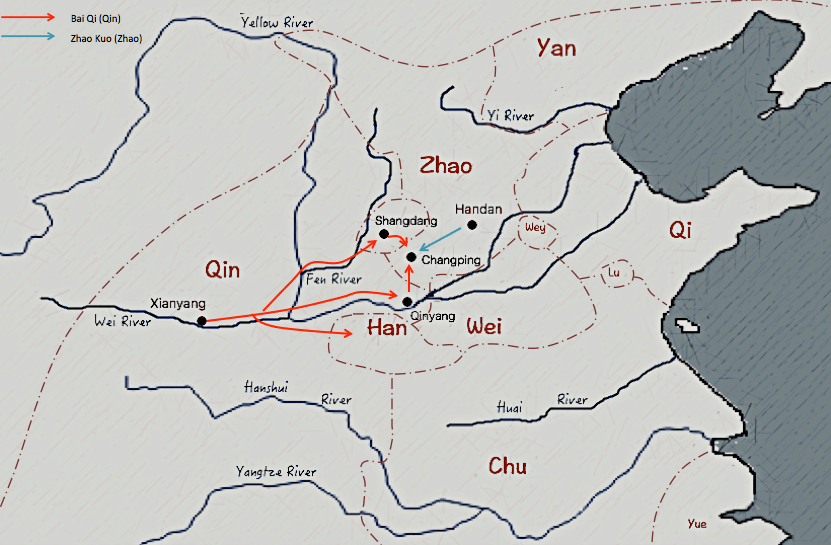
Source: SY [CC BY-SA 4.0] from Wikimedia Commons
This conflict is considered to be the battle that ultimately led to the unification of all Chinese states. Zhao was one of the most powerful states still in opposition to Qin, which held much of the territory in the western part of China. The Qin had vanquished all other competitors.
There was not much difference in military strength between the two. However, the Qin general lured the Zhao into a trap, splitting their armies into two manageable groups. After 46 days, the Zhao surrendered.
Did You Know?
Qin General Bai Qi was so brutal he earned the nickname “the human butcher.”
-
Battle of Verdun
Major conflict: World War I
When: February to December 1916
Estimated casualties: 750,000

Source: By Collier and Son [Public Domain] via Wikimedia Commons
The French city of Verdun had been a key stronghold for the French military throughout the country’s history. It sits on the River Meuse and is surrounded by several forts and a citadel. The German army believed they could take the Meuse Heights, a high ground from which it could launch an artillery attack on the city itself.
The generally accepted story of the battle is that the German General Erich von Falkenhayn wanted to fight a war of attrition, to keep fighting until France simply gave up. They would lure the French and British reinforcements into a battle and “bleed [themselves] white.”
The French won anyway.
Did You Know?
Erich von Falkenhayn’s failed strategy cost him his job. He was removed after the battle ended.
-
Somme Offensive
Major conflict: World War I
When: July to November 2016
Estimated casualties: 1.2 million
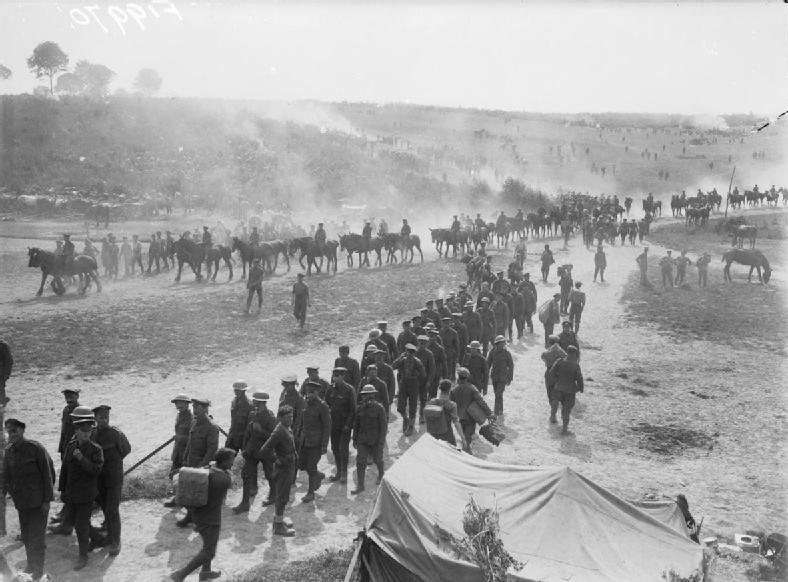
Source: By Ernest Brooks – Public Domain
When the German army launched the attack on Verdun, the Allied forces (British and French) had already determined to attack German strongholds on the River Somme. As a result, the French could not commit the promised troops to the offensive as they were defending their positions at Verdun. This caused the British troops to be overrun on the first day. They lost just over 57,000 soldiers.
Yet, over the course of several battles for the forts and strongholds near the Somme, the British and French eventually overwhelmed German defenses that were dug in to trenches.
Did You Know?
This was the first instance of the heavy use of tanks in ground combat. Most of the tanks broke down during battle.
-
Battle of Berlin
Major conflict: World War II
When: April 1945
Estimated casualties: 1.3 million
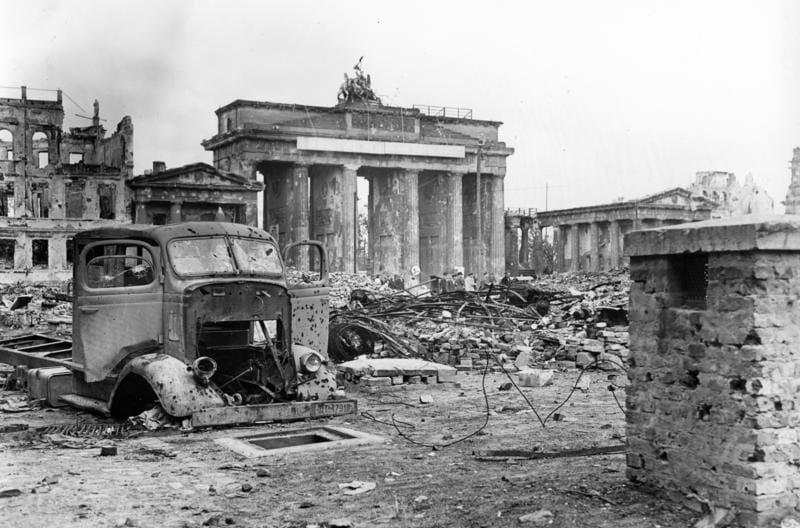
Source: By Bundesarchiv- Weinrother, Carl [CC-BY-SA 3.0] via Wikimedia Commons
This battle was the decisive battle in the European campaign against Nazi Germany. It resulted in the fall of Berlin and precipitated the suicide of Adolf Hitler and some of his team. Earlier in the year, Hitler had ordered troops to hold against Soviet forces in Hungary. The effort depleted German ground resources. The Soviets would attack Berlin on land and the Allies committed some air power.
Over 3 million soldiers from both sides fought there.
After the Soviet forces broke through German defenses outside Berlin, the Soviets began shelling the heart of the German government.
Did You Know?
Nazi soldiers wanted to surrender to the US or British forces rather than the Soviets fearing reprisal for cruel treatment of captured Red Army soldiers by the Germans.
-
Battle of Stalingrad
Major conflict: World War II
When: August 1942 to February 1943
Estimated casualties: 1.8 million
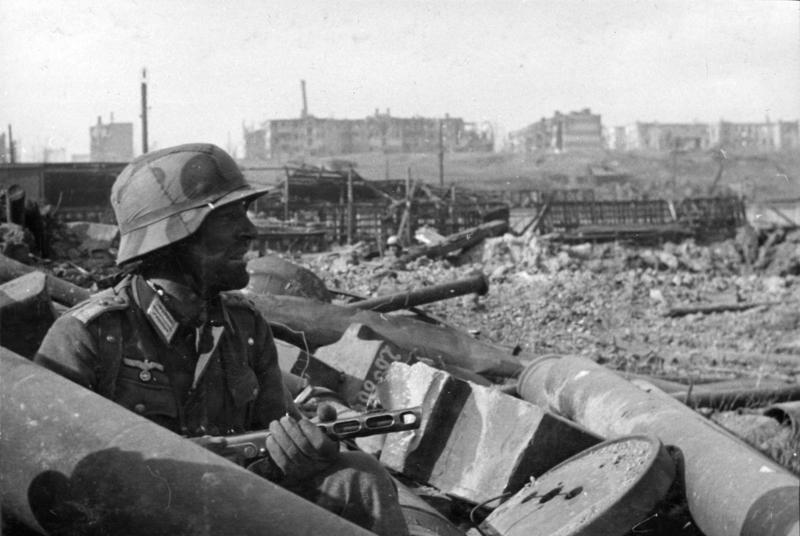
Source: Bundesarchiv [CC-BY-SA 3.0] via Wikimedia Commons
This was the largest confrontation in World War II and the largest battle of all time. Nearly 2.2 million in personnel combined of both sides fought in the battle and nearly half were lost (there were significant civilian casualties in the battle).
Stalingrad was an important industrial city in construction of armaments and transport down the Volga River. The city was built on its shores. Germany believed it was important to take the city. Their attack began using air raids and continued on the ground.
The Soviet army responded with a two-pronged attack. They attacked from the front and rear, surrounding the German army in the city, leaving them cut off from reinforcements. Eventually the German forces surrendered.
Did You Know?
In 1946, a Russian filmmaker made a three-hour film depicting a fictionalized version of the Battle of Stalingrad.
